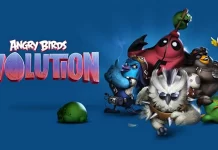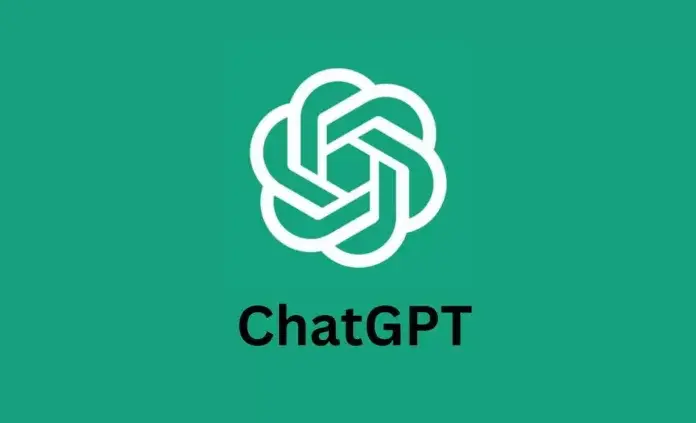ChatGPT is a language-learning tool developed by Microsoft that has revolutionized the way we learn and communicate. It is a powerful tool that provides users with multiple classifications of language models for different purposes. With ChatGPT, users can create automated conversations, build natural language processing systems, and more. The classifications of ChatGPT include natural language processing (NLP), question answering (QA), chatbot, and dialogue system. Each of these classifications offers unique advantages and features to the user, making ChatGPT a great tool for both experienced and novice language learners.
What is ChatGPT?
ChatGPT is an impressive language-learning tool that has taken the world by storm. It is a large language model developed by Microsoft, designed to help users improve their language skills and communication abilities. But what exactly is ChatGPT?
ChatGPT is a language model that has been trained on a vast amount of data from the internet. It uses this data to generate responses to user input in a conversational manner. The chatbot functionality of ChatGPT allows users to engage in automated conversations, providing an interactive and immersive language-learning experience.
One of the key features of ChatGPT is its ability to understand and process natural language. This means that users can communicate with the language model in a more human-like way, making the learning process feel more intuitive and enjoyable. Additionally, ChatGPT’s dataset size enables it to have a broad knowledge base, covering a wide range of topics and providing users with accurate and relevant information.
Overall, ChatGPT is a powerful tool for language learning. Its large language model and extensive dataset size allow it to generate responses that are contextually appropriate and informative. Whether you’re a beginner looking to improve your language skills or an experienced learner seeking advanced conversation practice, ChatGPT offers a unique and effective way to enhance your language abilities.
The Importance of ChatBots in Language Learning
ChatBots have become increasingly significant in language learning due to their unique ability to provide interactive and engaging conversations. This is where the power of ChatGPT, a large language model, comes into play. As a language model, ChatGPT leverages its vast dataset size to generate responses that are contextually appropriate and informative.
ChatBots offer a safe and judgment-free environment for language learners to practice their skills. By engaging in conversations with ChatGPT, learners can develop their vocabulary, grammar, and overall fluency in a more interactive and immersive way. This hands-on approach helps learners feel more confident and comfortable in real-life communication scenarios.
Additionally, ChatGPT allows learners to access a wide range of topics and information. With its broad knowledge base, learners can explore various subjects and engage in meaningful discussions. This exposure to diverse content enhances language learning by expanding vocabulary and fostering a deeper understanding of different cultures and perspectives.
Moreover, the conversational nature of ChatBots facilitates a more natural and intuitive learning experience. Language learners can practice their language skills in a realistic context, allowing for better retention and application of what they have learned.
Classification of ChatGPT
ChatGPT is a language-learning tool that falls into multiple classifications. One of the key classifications is as a large language model. As a large language model, ChatGPT leverages its vast dataset size to generate contextually appropriate and informative responses. This means that when you engage in conversations with ChatGPT, the responses you receive are based on a wide range of information and knowledge.
Another classification of ChatGPT is as a language model chatbot. ChatGPT can engage in automated conversations with users, providing an interactive and immersive language-learning experience. This chatbot functionality allows users to practice their language skills in a safe and judgment-free environment.
Furthermore, ChatGPT can be classified as a dialogue system. This means that it is designed to engage in conversations and exchanges with users, allowing for a more natural and interactive learning experience.
Lastly, ChatGPT can also be classified as a natural language processing (NLP) system and a question answering (QA) system. These classifications highlight ChatGPT’s ability to understand and process natural language and provide accurate and relevant information in response to user queries.
Overall, the multiple classifications of ChatGPT as a large language model, chatbot, dialogue system, NLP system, and QA system make it a versatile and powerful tool for language learners of all levels.
Rule-based ChatBots
Rule-based ChatBots are another classification of ChatGPT that plays a significant role in language learning. Unlike generative ChatBots, which generate responses based on patterns and data, rule-based ChatBots follow a predefined set of rules or instructions. These rules dictate how the ChatBot responds to specific inputs or queries from users.
One of the advantages of rule-based ChatBots is their ability to provide accurate and consistent responses. Since their responses are based on predetermined rules, users can expect a certain level of reliability and precision. This makes them particularly useful for language learners who want to practice specific language patterns or structures.
Additionally, rule-based ChatBots can be customized and tailored to fit the needs of individual users. Language teachers can create rule-based ChatBots that focus on specific topics or grammar rules, providing learners with targeted practice and feedback.
While rule-based ChatBots may not have the same level of flexibility and creativity as generative ChatBots, they offer a more structured and controlled learning experience. By interacting with rule-based ChatBots, language learners can reinforce their understanding of grammar rules, vocabulary usage, and sentence structures.
In summary, rule-based ChatBots, like ChatGPT, offer a valuable tool for language learning. Their predefined set of rules and consistent responses provide learners with targeted practice and feedback, helping them improve their language skills in a structured and controlled manner.
Generative ChatBots
Generative ChatBots, like ChatGPT, are another classification of this powerful language-learning tool. As a large language model, ChatGPT leverages its vast dataset size to generate responses that are contextually appropriate and informative. This means that when you engage in conversations with ChatGPT, the responses you receive are based on a wide range of information and knowledge.
Generative ChatBots offer a unique advantage in language learning by providing more flexible and creative responses. Unlike rule-based ChatBots that follow predetermined instructions, generative ChatBots have the ability to generate unique and diverse responses based on patterns and data. This allows for a more dynamic and interactive learning experience.
Language learners can benefit from the creativity of generative ChatBots as it allows them to practice their language skills in various contexts. By engaging in conversations with ChatGPT, learners can improve their vocabulary, grammar, and overall fluency through exposure to different sentence structures and expressions.
The large language model of ChatGPT, combined with its generative capabilities, enables learners to have engaging and meaningful conversations. Whether you’re practicing a new language or looking for advanced conversation practice, generative ChatBots like ChatGPT offer a versatile tool that can adapt to your learning needs. So dive into the world of generative ChatBots and unleash your language-learning potential with ChatGPT!
Application of ChatGPT
ChatGPT, with its capabilities as a large language model, has numerous applications in language learning. One of the key applications is its use as a language model chatbot. As a chatbot, ChatGPT can engage in automated conversations with users, providing an interactive and immersive language-learning experience. Learners can practice their language skills by engaging in realistic conversations, which helps them improve their vocabulary, grammar, and overall fluency.
Another application of ChatGPT is its ability to process and understand natural language. This allows users to communicate with ChatGPT in a more human-like way, making the learning process feel intuitive and enjoyable. Additionally, the dataset size of ChatGPT ensures that it has a broad knowledge base, covering a wide range of topics. Learners can explore various subjects and engage in meaningful discussions, expanding their vocabulary and gaining a deeper understanding of different cultures and perspectives.
ChatGPT’s versatility as a large language model also makes it suitable for question answering. Learners can ask ChatGPT specific questions and receive accurate and relevant information in response. This feature is particularly useful for learners who want to enhance their knowledge in specific areas or seek clarification on certain topics.
In summary, the application of ChatGPT in language learning is vast. It serves as a language model chatbot, facilitates natural language processing, and offers question answering capabilities. With its large language model and extensive dataset size, ChatGPT provides users with a unique and effective tool to enhance their language abilities.
Benefits of Using ChatGPT in Language Learning
Using ChatGPT in language learning offers numerous benefits that can greatly enhance the learning experience. Firstly, the fact that ChatGPT is a large language model makes it a valuable tool. Its vast dataset size allows it to generate contextually appropriate and informative responses, providing learners with a wealth of knowledge and information. Whether you’re a beginner or an advanced learner, having access to such a comprehensive language model can greatly support your language acquisition journey.
Another major advantage of using ChatGPT is its functionality as a language model chatbot. This feature allows learners to engage in automated conversations, providing an interactive and immersive language-learning experience. By practicing their language skills in a safe and judgment-free environment, learners can build their confidence and fluency, ultimately improving their communication abilities.
Furthermore, ChatGPT’s ability to process and understand natural language makes the learning process feel more intuitive and enjoyable. Communicating with the language model in a more human-like way enhances the overall learning experience, making it feel less robotic and more like a genuine conversation.
Overall, the benefits of using ChatGPT in language learning are vast. Its large language model, combined with its chatbot functionality and natural language processing abilities, provides learners with a versatile and powerful tool to enhance their language skills. So whether you’re looking to improve your vocabulary, practice your grammar, or engage in meaningful discussions, ChatGPT has got you covered.
Challenges and Limitations of ChatGPT Technology
While ChatGPT is an incredible language-learning tool, it does have some challenges and limitations. One of the main challenges is the reliance on a large language model. While this allows ChatGPT to generate contextually appropriate responses, it also means that the model can sometimes produce incorrect or nonsensical answers. This can be frustrating for language learners who are relying on the accuracy of the information provided by ChatGPT.
Another limitation is the language model aspect of ChatGPT. While it can engage in automated conversations and provide immersive learning experiences, it lacks the ability to truly understand the nuances of human language. This can result in ChatGPT generating responses that feel robotic or unnatural, hindering the fluidity of conversations.
Additionally, the dataset size of ChatGPT, while extensive, does not cover every topic or domain. This means that there may be instances where ChatGPT lacks knowledge or struggles to provide relevant information. It’s important for users to be aware of this limitation and to approach ChatGPT as a helpful tool rather than a definitive source of information.
Overall, while ChatGPT is a remarkable tool, it’s important to acknowledge its challenges and limitations. By understanding these limitations and using ChatGPT in conjunction with other language-learning resources, learners can maximize their language acquisition journey.
Future of ChatGPT Technology in Language Learning.
As we look to the future of language learning, the potential of ChatGPT technology is truly exciting. With its capabilities as a large language model, ChatGPT has already revolutionized the way we learn and communicate. However, the future holds even more promise.
One area where ChatGPT technology is expected to make significant advancements is in its ability to understand and generate natural language. As language models continue to evolve, we can expect ChatGPT to become even more proficient in processing and responding to human-like language. This means that the conversations and interactions with ChatGPT will feel even more intuitive and realistic, further enhancing the language learning experience.
Additionally, as more data is collected and integrated into the chatgpt dataset size, ChatGPT’s knowledge base will continue to expand. This will enable learners to access even more information and engage in discussions on an even wider range of topics. The possibilities for learning and exploration are limitless.
Furthermore, with ongoing advancements in artificial intelligence and machine learning, we can expect ChatGPT to become even more personalized and adaptive to individual learners. The technology may be able to identify specific areas where learners struggle and provide targeted exercises and practice materials to address those weaknesses.
In summary, the future of ChatGPT technology in language learning is incredibly bright. As language models continue to improve, we can expect even more immersive, personalized, and effective language learning experiences with ChatGPT at the forefront. The potential for growth and innovation in this field is truly remarkable, and language learners have a lot to look forward to.
Alternation of ChatGPT
As ChatGPT continues to evolve, there is a constant drive for improvement and alternation to enhance its functionality and effectiveness in language learning. The development team behind ChatGPT is committed to making regular updates and upgrades to the technology to ensure that it stays at the forefront of language-learning tools.
One area of alternation is the continuous expansion of the chatGPT dataset size. As more data is collected and integrated, the knowledge base of ChatGPT becomes even more comprehensive and diverse. This allows learners to explore an even wider range of topics and engage in more meaningful and insightful conversations. With each update, ChatGPT becomes a richer and more powerful tool for language acquisition.
Additionally, the alternation of ChatGPT includes advancements in its ability to understand and generate natural language. As language models continue to improve, ChatGPT becomes even more proficient in processing and responding to human-like language. This means that conversations with ChatGPT will become even more natural and intuitive, further enhancing the immersive language-learning experience.
Overall, the alternation of ChatGPT ensures that it remains a cutting-edge language-learning tool. With regular updates, expansions to the dataset size, and advancements in natural language processing, ChatGPT continues to evolve and provide learners with a versatile and effective way to enhance their language abilities. So stay tuned for the exciting alternations to come!





























